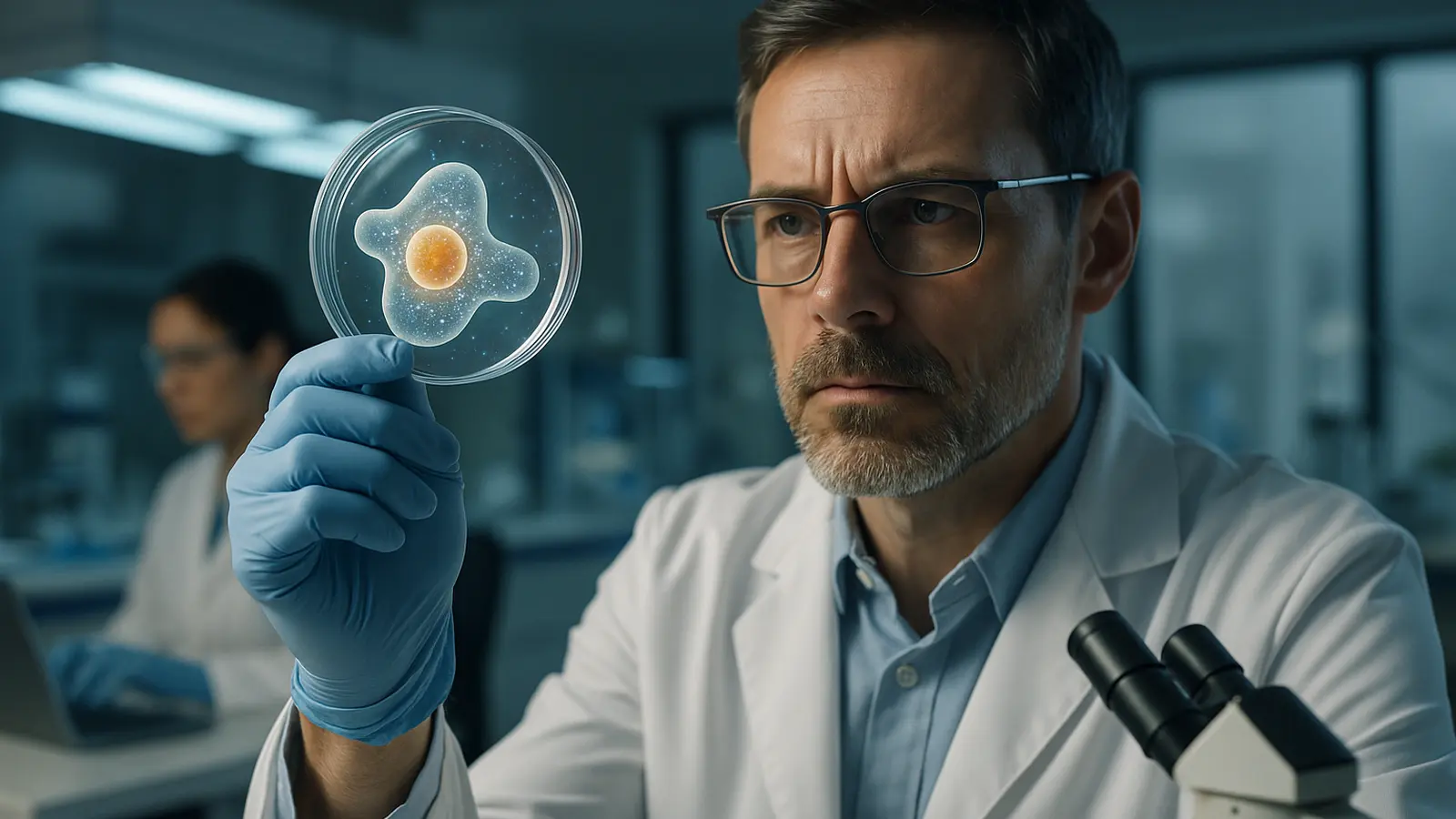5 Minutes
A radically rewritten genetic code
Researchers at the Medical Research Council Laboratory of Molecular Biology (MRC LMB) in the UK have built a synthetic strain of Escherichia coli, dubbed Syn57, whose genome uses only 57 of the 64 standard codons that underpin life on Earth. By redesigning the bacterium’s entire genomic script, the team compressed the canonical genetic code and demonstrated that a living cell can function with a substantially reduced set of codons — a milestone that opens new paths for genetic code expansion, industrial biotechnology and biosafety.
Scientific background: What are codons and why some are redundant?
The genetic code translates DNA and RNA sequences into proteins using 64 codons, each a triplet of nucleotides. These three-letter codons tell a cell which amino acid to add next during protein synthesis and when to terminate translation. Natural organisms use only 20 amino acids to build proteins, so many codons are synonymous — different codons that specify the same amino acid. That redundancy has persisted across billions of years of evolution, but it also offers a design opportunity: if some codons can be removed without breaking cellular function, those 'freed' codons could be repurposed for new biochemical functions.
Rewriting a genome: How Syn57 was built
The MRC LMB team engineered Syn57 by redesigning and synthesizing the bacterium’s entire genome. They systematically removed selected redundant codons and replaced them with synonymous alternatives. Specifically, the researchers eliminated four of six serine codons, two of four alanine codons, and one stop codon across the genome. Achieving the 57‑codon architecture required more than 101,000 targeted nucleotide changes.
The redesign was planned in silico and executed in staged steps: the genome was broken into ~100 kilobase fragments that were synthesized, tested in living hosts, and iteratively combined. This stepwise validation reduced the risk of lethal or deleterious modifications. As the team worked, they encountered uncertainty and setbacks typical of large-scale genome engineering — but careful testing of intermediate constructs allowed them to assemble the final fully synthetic Syn57 strain.

Technical milestone
Syn57 replaces the previous record of a 61‑codon genome. By compressing the code to 57 codons, the researchers freed up seven codons relative to the full 64‑codon set. That makes Syn57 the most extensively recoded living organism to date and demonstrates that life can tolerate a significantly compressed genetic blueprint.
Key discoveries, applications and implications
One immediate scientific opportunity from codon compression is genetic code expansion. With fewer native codons in use, researchers can reassign freed codons to encode non‑canonical amino acids or synthetic building blocks. These novel residues can be used to make new polymers, macrocycles and designer proteins with properties not found in nature. In the team’s words, Syn57 provides “more space to introduce further non‑canonical amino acids,” potentially enabling innovative synthetic chemistries and therapeutics.
Another major implication is biosafety. A genome that diverges from the canonical code can be effectively unreadable to natural viruses and mobile genetic elements, which rely on the host’s translation system. That translational incompatibility could confer intrinsic resistance to infection and reduce the risk of viral contamination in industrial fermentation. Recoding also creates a genetic containment mechanism: horizontal transfer of genetic material from Syn57 into wild microbes would likely produce nonfunctional proteins, helping prevent engineered genes from spreading into natural ecosystems.
Industrial and research benefits
For industrial biotechnology, Syn57‑style strains could lower the economic risks of large‑scale microbial protein production by reducing the chance of viral outbreaks. In academic research, a recoded chassis is a flexible platform for introducing synthetic biology innovations while limiting cross‑talk with natural organisms.
Expert Insight
Dr. Laura Chen, a synthetic biology researcher (fictional), comments: "Reducing a genome to 57 codons is a tour de force in design and assembly. It shows that genome synthesis can relocate life into previously unexplored regions of ‘sequence space’. Practically, this gives engineers a safer, more controllable chassis for deploying non‑natural chemistries. The ethical and ecological implications still require careful oversight, but the technical proof of concept is compelling."
Future prospects and challenges
Moving forward, researchers will evaluate Syn57’s long‑term stability, growth performance under diverse conditions, and how well it tolerates incorporation of non‑canonical amino acids. Challenges include maintaining fitness after large‑scale recoding, scaling production, and establishing robust regulatory and biosafety frameworks that address environmental release, dual‑use risks and public concerns.
Conclusion
Syn57 represents a landmark in genome synthesis and genetic code engineering: a living bacterium built to operate with just 57 codons. The achievement proves that life is tolerant of significant codon compression and creates opportunities to expand biology with non‑canonical amino acids, improve industrial bioprocess robustness and add genetic containment features. As researchers refine these technologies, careful stewardship will be essential to realize their benefits while managing ethical and ecological risks.
Source: science


Leave a Comment